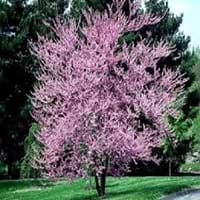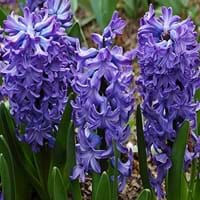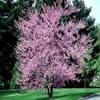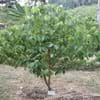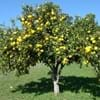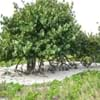Life Span
Perennial
Perennial
Type
Tree
Bulb or Corm or Tuber
Origin
Northeastern United States, Mid-Atlantic United States, Southeastern United States, North-Central United States, Central United States, South-Central United States, Canada
Mediterranean, Western Asia
Types
Not Available
Not Available
Habitat
Alpine Meadows, shaded woods
Mediterranean region
USDA Hardiness Zone
4-9
4-9
Sunset Zone
1a, 1b, 2a, 2b, 3a, 3b, 7, 8, 9, 10, 11, 12, 13, 14, 15, 16, 17, 18, 19, 20
21,22
Habit
Oval or Rounded
Clump-Forming
Flower Color
Red, Purple, Violet
White, Yellow, Red, Blue, Purple, Pink, Lavender, Violet
Flower Color Modifier
Bicolor
Bicolor
Fruit Color
Brown, Chocolate
Not Available
Leaf Color in Spring
Purple, Plum
Green
Leaf Color in Summer
Green, Dark Green
Light Green
Leaf Color in Fall
Yellow, Yellow green
Several shades of Green
Leaf Color in Winter
Not Available
Light Green
Leaf Shape
Heart-shaped
Long slender
Plant Season
Spring, Summer, Fall
Spring, Winter
Sunlight
Full Sun, Partial Sun
Full Sun, Partial Sun
Growth Rate
Medium
Medium
Type of Soil
Clay, Loam, Sand
Loam
The pH of Soil
Acidic, Neutral, Alkaline
Acidic, Neutral
Soil Drainage
Well drained
Well drained
Bloom Time
Early Spring, Spring, Late Spring
Early Spring, Spring, Late Winter, Indeterminate
Tolerances
Drought
Black Walnut Toxicity, Rabbit, Shade areas
Where to Plant?
Ground
Container, Ground, Pot
How to Plant?
Cuttings
chipping, Offsets, scooping, Twin scaling, Vegetative
Plant Maintenance
Medium
Low
Watering Requirements
Keep the ground moist but not water-logged
Medium
In Summer
Lots of watering
Lots of watering
In Spring
Moderate
Moderate
In Winter
Average Water
Average Water
Soil pH
Acidic, Neutral, Alkaline
Acidic, Neutral
Soil Type
Clay, Loam, Sand
Loam
Soil Drainage Capacity
Well drained
Well drained
Sun Exposure
Full Sun, Partial Sun
Full Sun, Partial Sun
Pruning
Prune to stimulate growth, Remove damaged leaves, Remove dead branches, Remove dead leaves
Remove damaged leaves, Remove dead branches, Remove dead leaves
Fertilizers
All-Purpose Liquid Fertilizer
All-Purpose Liquid Fertilizer, General garden fertilizer, Time release fertilizer
Pests and Diseases
Bacterial Canker, Verticillium Wilt
Pests and diseases free
Plant Tolerance
Drought
Black Walnut Toxicity, Rabbit, Shade areas
Flower Petal Number
Single
Single, Double, Semi-Double
Foliage Texture
Medium
Medium
Foliage Sheen
Glossy
Glossy
Aesthetic Uses
Beautification, Formal Garden, Ground Cover, Showy Purposes
Beautification, Bouquets, Cottage Garden, Landscape Designing, Showy Purposes
Beauty Benefits
Not Available
Not Available
Environmental Uses
Air purification, Food for animals, Food for birds, Nesting sites for birds
Not Available
Medicinal Uses
Unknown
Not Available
Part of Plant Used
Not Applicable
Flowers
Other Uses
Beneficial species for attracting pollinators, Used as Ornamental plant
Decoration Purposes, Showy Purposes
Used As Indoor Plant
No
Yes
Used As Outdoor Plant
Yes
Yes
Garden Design
Feature Plant, Foundation, Mixed Border, Shade Trees
Bedding Plant, Container, Cutflower, Mixed Border, Rock Garden / Wall
Botanical Name
CERCIS canadensis 'Forest Pansy'
Hyacinthus orientalis
Common Name
Eastern Redbud, Forest Pansy Redbud
Hyacinth, common hyacinth, garden hyacinth, dutch hyacinth
In Hindi
Forest Pansy Redbud
ह्यचीन्थ
In German
Forest Pansy Redbud
Hyazinthe
In French
gainier du Canada
jacinthe
In Spanish
Cercis canadensis
jacinto
In Greek
Forest Pansy Redbud
υάκινθος
In Portuguese
Forest Pansy Redbud
jacinto
In Polish
Judaszowiec kanadyjski
hiacynt
In Latin
Forest Pansy Redbud
et hyacinthinas,
Phylum
Spermatophyta
Magnoliophyta
Class
Magnoliopsida
Liliopsida
Family
Fabaceae
Liliaceae
Clade
Angiosperms, Eudicots, Rosids
Angiosperms, Monocots
Tribe
Not Available
Not Available
Subfamily
Not Available
Scilloideae
Number of Species
Not Available
Importance of Forest Pansy Redbud and Hyacinth
Want to have the most appropriate plant for your garden? You might want to know the importance of Forest Pansy Redbud and Hyacinth. Basically, these two plants vary in many aspects. Compare Forest Pansy Redbud and Hyacinth as they differ in many characteristics such as their life, care, benefits, facts, etc. Every gardener must at least have the slightest clue about the plants he wants to plant in his garden. Compare their benefits, which differ in many ways like facts and uses. The medicinal use of Forest Pansy Redbud is Unknown whereas of Hyacinth is Not Available. Forest Pansy Redbud has beauty benefits as follows: Not Available while Hyacinth has beauty benefits as follows: Not Available.
Compare Facts of Forest Pansy Redbud vs Hyacinth
How to choose the best garden plant for your garden depending upon its facts? Here garden plant comparison will help you to solve this query. Compare the facts of Forest Pansy Redbud vs Hyacinth and know which one to choose. As garden plants have benefits and other uses, allergy is also a major drawback of plants for some people. Allergic reactions of Forest Pansy Redbud are Unknown whereas of Hyacinth have Asthma respectively. Having a fruit bearing plant in your garden can be a plus point of your garden. Forest Pansy Redbud has no showy fruits and Hyacinth has no showy fruits. Also Forest Pansy Redbud is not flowering and Hyacinth is not flowering . You can compare Forest Pansy Redbud and Hyacinth facts and facts of other plants too.
